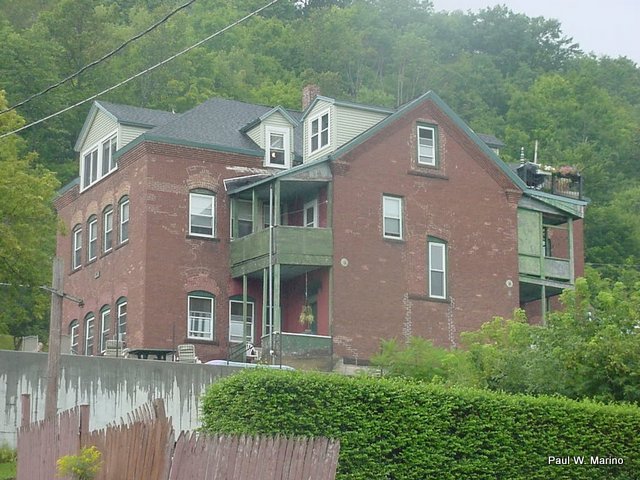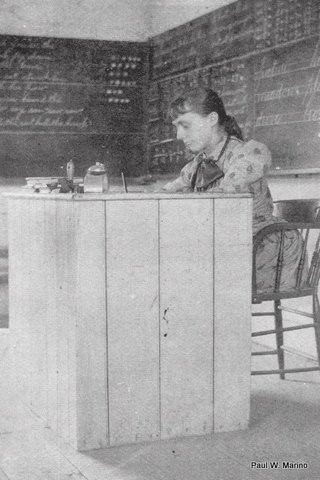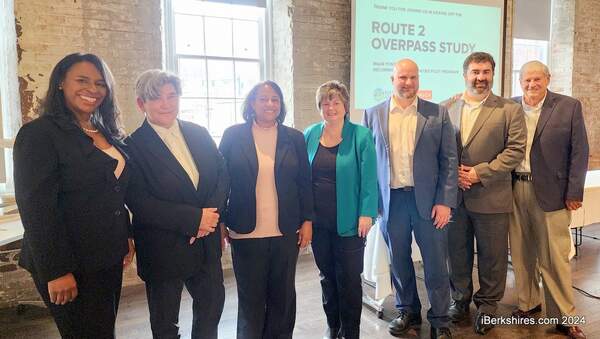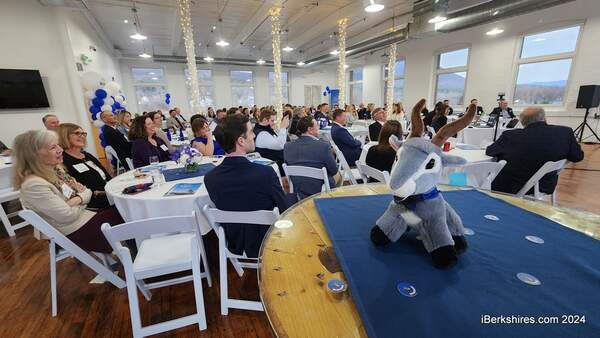

Our Neighbors: The Teacher
 Sarah T. Haskins' name continues on at the former public school, which now houses Child Care of the Berkshires. Sarah T. Haskins' name continues on at the former public school, which now houses Child Care of the Berkshires. |
NORTH ADAMS, Mass. — An unhappy fact about history is that women tend to be written out of it. So while we hear all about the Fathers of our country, our community, etc., we almost never hear about the Mothers.
This is bizarre, since we all know that no father is capable of becoming one on his own. And while they are usually unsung, the contributions of women are many and varied. So in this essay I've chosen to take a look at one of the few historical women of North Adams we actually have detailed information on: Sarah T. Haskins.
Haskins was a teacher, all of her adult life. Like most teachers right down to this very day, she was most likely grossly underpaid. And like most teachers, this was secondary to her; she was, first and foremost an educator, a builder of young minds and an instiller of good habits. Unlike most teachers, she was accorded a high honor by her community. An honor, I should point out, that remains unparalleled to this very day.
Haskins was born in Rowe and educated there. When she was 15, her mother kissed her goodbye and saw her aboard a stagecoach, which the young lady rode to Stamford, Vt., where a job as a teacher awaited her. Like an equally young Laura Ingalls, she did not study teaching. Rather, she took a written test and was hired on the results. But she only held the post for one year.
Before going into why, it's worth taking a look at what life was like for a teacher in the 19th century. While modern teachers own their own homes or at least rent apartments, such independence was impossible in days gone by. Cash payment was low and often not handed over until the end of the school term. How, then, did a teacher live? The specific term was that they "boarded around." This means that a teacher was put up as a boarder in the home of one of her students. After a specified period of time he/she moved to the home of a different student.
If this sounds inconvenient to you, it's actually worse than it sounds. A teacher — especially a female — was expected to set an example of propriety. If she went out somewhere, she was expected to be back at an unreasonably early hour. If she was "seeing" a gentleman, there was no privacy for either of them. And if she chanced to marry the gentleman, she lost her job. At once. This practice continued into the 20th century. Even in the 1960s, when teachers were permitted to work after marriage, if she became pregnant she was on maternity leave the day it started to show.
 Haskins began her long career in education at the age of 15, started her own school, and worked in the North Adams school system for 57 years. Haskins began her long career in education at the age of 15, started her own school, and worked in the North Adams school system for 57 years. |
In spite of these draconian practices, some women saw teaching as a sacred calling. So sacred, they were willing to live with the limitations put on them by society. Haskins was one of those who felt called to teach. So when she'd been teaching for only a year, she resigned and moved to Bennington, Vt., to attend a state Normal School, what a formal school for teachers was then called.
After graduating, Haskins did not return to Stamford. Instead, she moved to North Adams, where she would spend the rest of her career. She started by opening her own school in the neighborhood of Wesleyan Hill (think Wesleyan Street, which is off Eagle). There was already a public one-room school in that neighborhood, but the parents weren't satisfied with the teacher there. It was under their encouragement that Haskins started her own school. One of her students in that school grew up to achieve great notoriety as a businessman, entrepreneur and philanthropist: Herbert Walter Clark.
Haskins' reputation soon attracted the attention of the North Adams Public School System and she was lured away to teach at Drury Academy, where she helped to organize the grading system. From Drury, she moved to the Veazie Street School, but was back at Drury within three years time. Then, in 1897, she was made the principal of State Street School. Not that it was actually on State Street. It was and is on Hooker Street (on the corner of Francis Street), but it served the State Street neighborhood. She spent the rest of her career in this school, largely teaching English to the children of immigrants. One of her students at the State Street School may have been my Uncle James.
As a teacher, Miss Haskins was of the "old school" variety, with a firm belief in the three Rs and the value of corporal punishment. She did not approve of new fads, such as "vertical writing," teaching with pictures and such. While she believed that all children should understand sewing and other skills, she did not approve of school time being devoted to them. Rather, a solid education in reading, writing and arithmetic was all that was necessary; a child could pick up other things on his or her own.
In 1913, Miss Haskins retired at the age of 76. She lived briefly in California, but settled back in North Adams, where she boarded with Dr. M.M. Brown on Wesleyan Street. And it was there that she died peacefully on April 15, 1927. Her gravestone can be seen not far from the Hunter lot in Hillside Cemetery.
But there is another part to her story that is quite remarkable. Like many small schools in a growing community, the State Street School became overcrowded and plans were laid to replace it with something larger. The something in question was built on State Street itself in 1922.
As a general rule, when a school is given a name, that name is taken from the neighborhood it's in. Thus we had the State Street, the Church Street, the Veazie Street and the Union Schools, to name a few. When a school is named after a person, that person is usually deceased. Thus we had the Miner and Sullivan schools, both renamed for local educators. But the new State Street school broke with this venerable tradition. It was named after Sarah T. Haskins, who was still very much alive and able to enjoy the honor.
This series is an attempt to help us get to know a particular community of neighbors, without whose vision and efforts this city would not exist. These neighbors are the residents of Hillside Cemetery. As part of our effort to restore and maintain this, the city’s oldest municipal cemetery, we hope to generate interest, funding and volunteer labor in an effort to restore it. This work is an important step in maintaining our city's heritage and civic pride. But more than this, it's a way in which we can help our neighbors; neighbors who laid the foundations of North Adams and paved the way for us.
Tags: hillside cemetery, historical figure, our neighbors,















